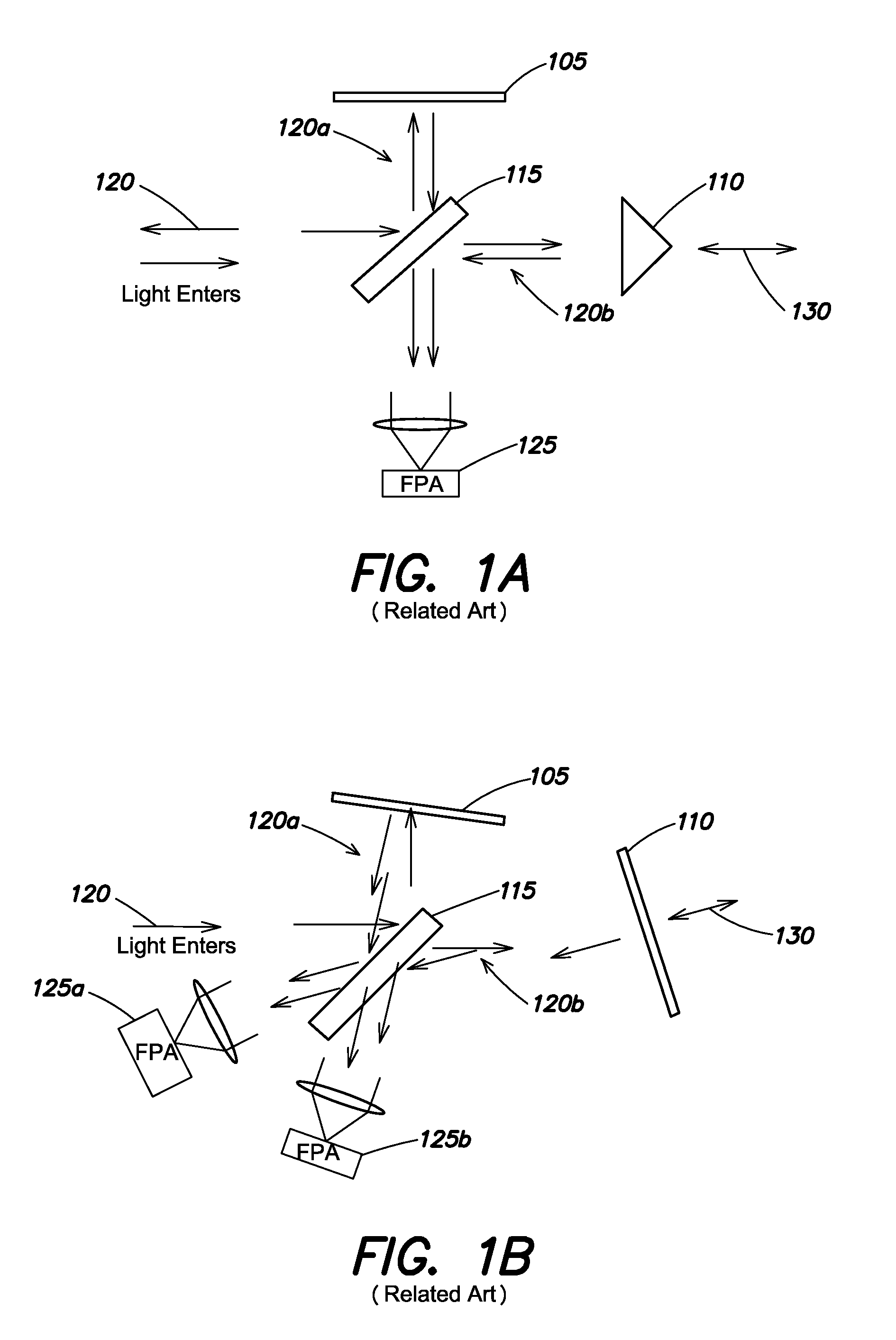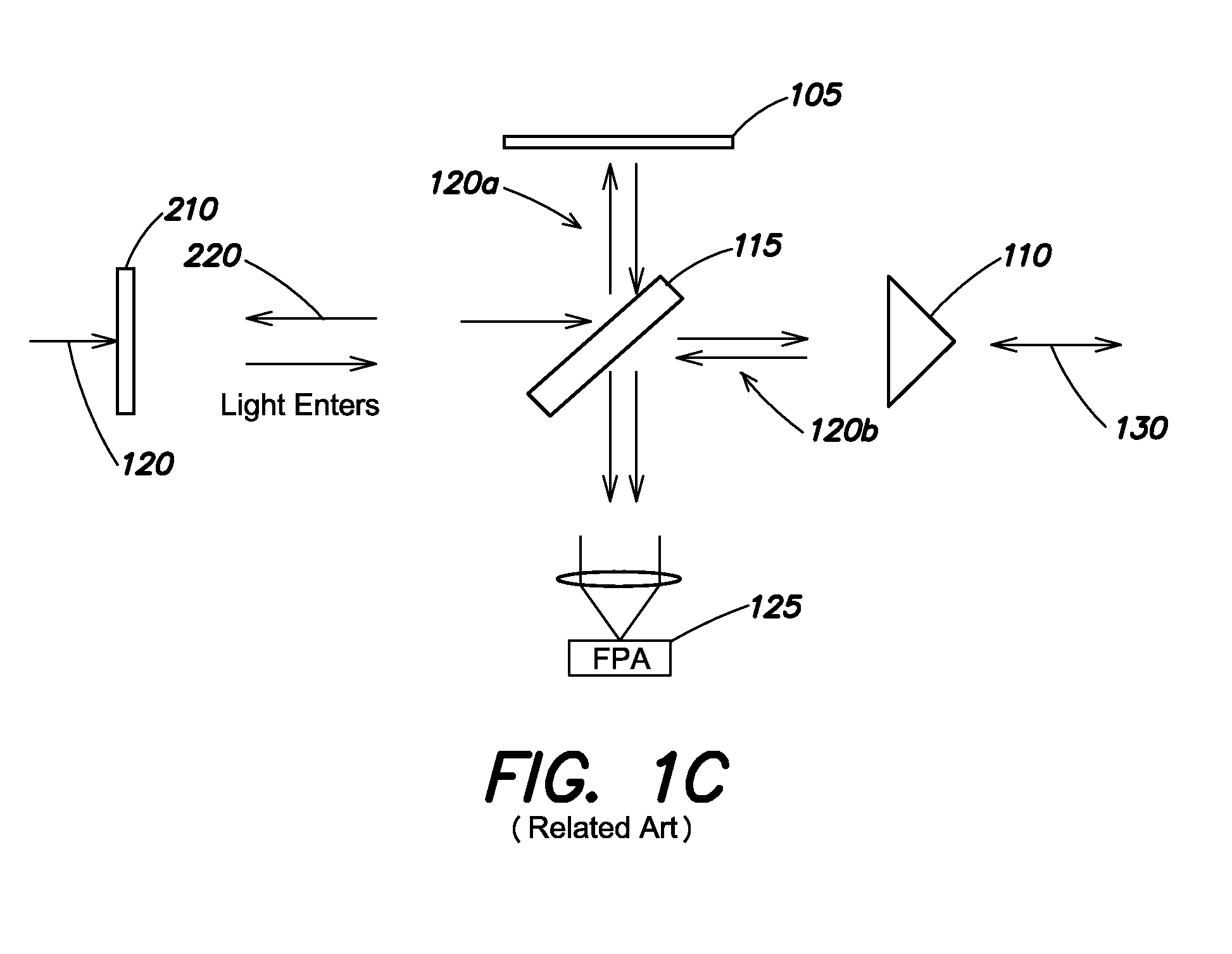Imaging spectropolarimeter using orthogonal polarization pairs
a spectropolarimeter and orthogonal polarization technology, applied in the direction of interferometric spectrometry, optical radiation measurement, instruments, etc., can solve the problems of inefficient arrangement in terms of photon collection efficiency, increased complexity, and increased complexity, so as to avoid additional signal loss at the system input.
- Summary
- Abstract
- Description
- Claims
- Application Information
AI Technical Summary
Benefits of technology
Problems solved by technology
Method used
Image
Examples
Embodiment Construction
[0030]A sensor combining imaging spectrometry and polarimetry may provide powerful dual (orthogonal) phenomenologies to detect targets and reduce or eliminate false alarms. However, conventional spectropolarimeters suffer from issues with sensitivity and simultaneity when dividing the incoming signal into different wavebands and polarizations. As discussed above, conventional spectropolarimeters have low efficiency as there are very few photons per spectral channel per polarization, which can result in focal plane noise dominating the overall signal to noise ratio of retrieved spectra. For example, a system such as that illustrated in FIG. 2 loses 50% of the input signal even when performing spectral imaging alone, and when modified to collect spectra and polarization data simultaneously (with the insertion of the polarizer 210 in the input optical train) loses 75% of the signal at any time. Additionally, conventional spectropolarimeters measure different polarizations sequentially ...
PUM
 Login to View More
Login to View More Abstract
Description
Claims
Application Information
 Login to View More
Login to View More - R&D
- Intellectual Property
- Life Sciences
- Materials
- Tech Scout
- Unparalleled Data Quality
- Higher Quality Content
- 60% Fewer Hallucinations
Browse by: Latest US Patents, China's latest patents, Technical Efficacy Thesaurus, Application Domain, Technology Topic, Popular Technical Reports.
© 2025 PatSnap. All rights reserved.Legal|Privacy policy|Modern Slavery Act Transparency Statement|Sitemap|About US| Contact US: help@patsnap.com



